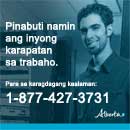- News Front Page
- Uncategorized
- Headline News
- Filipino Calgarian
- Business
- Pinoy Stories
- Community News
- Publisher's Note
- The Main Ingredient
- Views and Opinions
- Maikling Kwento
- Alberta News
- OFW – Month
- Travel News
- Health and Lifestyle
- Pinoy Toons
- Pinoy Spirit
- Entertainment
- The Philippine Lawyer
- Horoscope
- Greetings
- About Us
- Greetings From the Prime Minister
- Greetings from the President of the Philippines
- Greetings from the Premier of Alberta
- Greetings from the Mayor of Calgary
- Advertise With Us
- Disclaimer
- Subscription
Publisher's Note
- Publisher’s Note
 Hello dear readers,
Time flies so fast when life is so busy. 24 hours in a day is not enough for most people with all the things that they have to deal with in a day. But we should never forget that we should get at least 8 hours of sleep at night in order to [...]
Hello dear readers,
Time flies so fast when life is so busy. 24 hours in a day is not enough for most people with all the things that they have to deal with in a day. But we should never forget that we should get at least 8 hours of sleep at night in order to [...]
Visitors to Pinoytimes
Page added on April 22, 2018
Quitting Smoking: Second-Hand and Third-Hand Tobacco Smoke

Tobacco smoke causes disease and death in both smokers and non-smokers. This is because tobacco smoke damages every organ in the body. There are 7,000 chemicals in tobacco smoke (69 that we know cause cancer). When inhaled, the body quickly absorbs these 7,000 chemicals, causing changes in body cells that can lead to cancer, heart disease, and other serious health issues. There is no safe level of exposure.
Tobacco smoke is put into three categories:
- First-hand smoke, which is inhaled by the smoker.
- Second-hand smoke, which is the smoke either exhaled by a smoker or released from the end of a burning cigarette.
- Third-hand smoke, which is the tobacco smoke residue and gases that are left after a cigarette has been smoked.
Second-Hand Smoke
Second-hand smoke is both sidestream smoke (the smoke that comes from the burning end of a cigarette) and mainstream smoke (the smoke exhaled by the smoker).
Sidestream smoke makes up about 85% of second-hand smoke. It’s made up of different chemicals than exhaled mainstream smoke because it burns at lower temperature, and the burn is not as clean or complete.
Being exposed to second-hand smoke affects an adult’s heart and blood vessels right away. Adult non smokers who live with smokers are at about 25% more risk of developing heart disease.
Second-hand smoke causes lung cancer even in non-smokers. In Canada, more than 300 non-smokers die each year from lung cancer related to second-hand smoke.
Babies, Children, and Second-Hand Smoke
Because their bodies are developing, babies and young children are especially at risk to the toxins in second-hand smoke. Being exposed to second-hand smoke may cause:
- a low birth weight, which increases the chance of developing heart disease and type 2 diabetes when they grow up
- a higher risk of SIDS (sudden infant death syndrome)
- serious lower respiratory infections, like bronchitis and pneumonia
- respiratory symptoms, including coughing, mucous, wheezing, and being short of breath
- more ear infections than in a child who isn’t exposed to second-hand smoke (they are also more likely to have tubes put in their ears to drain the fluid caused by having a lot of ear infections)
Children who already have asthma have more attacks and the attacks are more serious.
Traces of cancer-causing and other toxins are found in the blood, urine, saliva, and breastmilk of non smokers, even after little exposure to second-hand smoke.
Opening windows in buildings or vehicles doesn’t protect you from the effects of second-hand smoke. Opening windows may get rid of the smell; however, it doesn’t get rid of the cancer-causing toxins in the air. Only 100% smoke-free environments protect you from second-hand smoke.
Third-Hand Smoke
Third-hand smoke is made up of the residue and gases of tobacco smoke. It:
- includes the gases that go back into the air
- stays on surfaces and in dust after the tobacco has been smoked
- builds up on surfaces, furniture, clothing, drapes, and carpets
- reacts with other elements in the environment to make more pollution
When tobacco is burning, it releases nicotine in the form of a vapour. This vapour attaches to surfaces like walls, floors, carpeting, drapes, and furniture. Nicotine reacts with nitrous acid (one source of which is burning tobacco) and forms cancer causing tobacco-specific nitrosamines (TSNAs). The nicotine can last for months on indoor surfaces. This means that these TSNAs are always being created. TSNAs are then inhaled, absorbed, or ingested. Anyone who smokes in any enclosed space (like a car or home) is exposing non-smokers to TSNAs.
Children are more sensitive to being exposed to third-hand smoke because they breathe near, crawl on, play on, touch, and even taste (because they often put their hands in their mouths) surfaces contaminated with tobacco residue.
Experts on third-hand smoke recommend 100% smoke-free homes and vehicles. They also suggest that replacing furniture, carpets, drapes, etc., can greatly reduce exposure to third-hand smoke residue.
Policies to Protect People from Exposure to Second-hand and Third-hand Smoke
Through Alberta’s Tobacco Reduction Act (TRA), all public and work places in the province are smoke free. The act also prohibits smoking on patios with food service and within 5 metres of a doorway, window, or air intake of a public place or workplace (including enclosed parking garages and work vehicles).
The following will protect children and others from exposure to second-hand and third-hand smoke:
- keep your home and vehicles smoke-free
- support legislation to make all hotels and motels smoke-free
- support policies for smoke-free multi-unit dwellings
For 24/7 nurse advice and general health information call health Link at 811.
Author: Tobacco Reduction Program, Alberta Health Service
Current as of: July 1, 2015
Ttranslated with permission from Healthwise Inc. © and is not intended to replace the advice of care you get from your doctor or other healthcare professional. Always consult your health professional for medical diagnosis and treatment.
RELATED STORIES
LATEST HEADLINES
- Pinay doctor joins Medicus Family Clinic and Pharmacy
- Multicultural Ethnic Media round table with Minister of Finance Joe Ceci together with Minister of Social Services Irfan Sabir
- Trans Mountain Pipeline keeps Canada working
- Facilitating travel to Canada while keeping Canadians safe
- Improving access to free English lessons
COMMUNITY NEWS
 Calgary Stampede 2018 Poster
Calgary Stampede 2018 Poster Alberta celebrates first Philippine Heritage Month
Alberta celebrates first Philippine Heritage Month UPAAA Welcomes New Philippine Consul General
UPAAA Welcomes New Philippine Consul General FCSC Spring Birthday Bash
FCSC Spring Birthday BashPINOY STORIES
 Appeals Court sustains installation of GPS by buses
Appeals Court sustains installation of GPS by buses- Holy Week practices in the Philippines
PINOY SPIRIT
HAVE YOUR SAY
Lorem ipsum dolor sit amet, consectetur adipiscing elit, dolor sit ipsum.PROMOTIONAL BLOCK
Lorem ipsum dolor sit amet, consectetur adipiscing elit, dolor sit ipsum.TRAVEL NEWS
PINOY TOONS
Tags
Archives

















